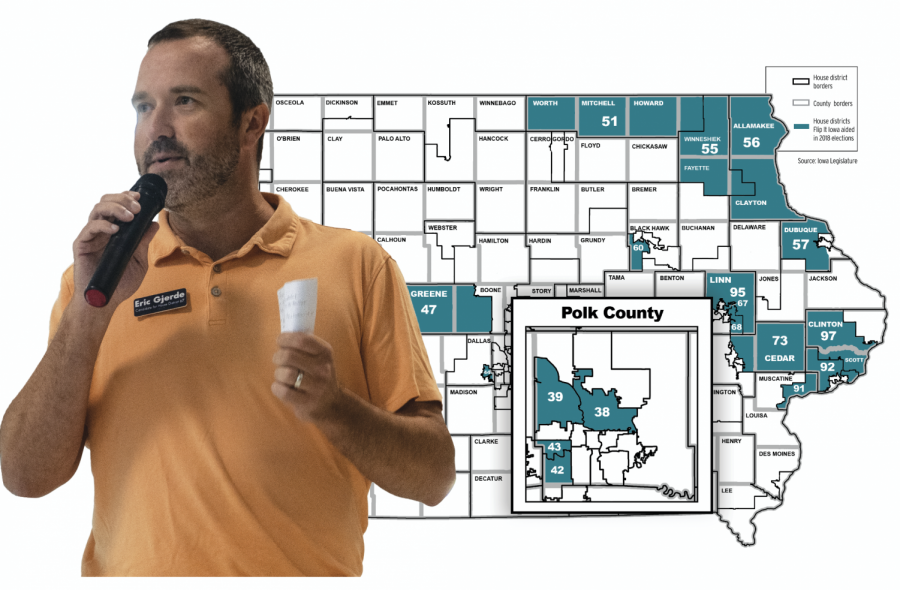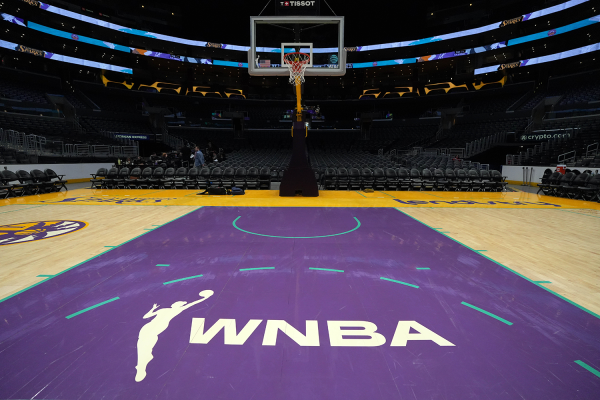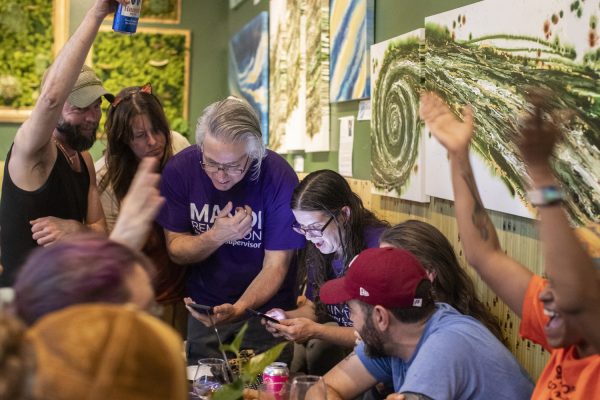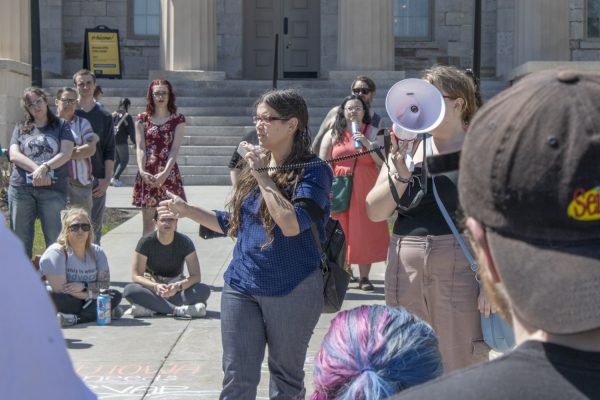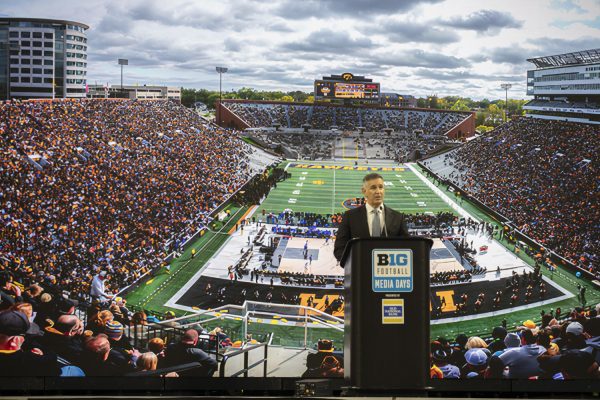Dispatching outside the ‘blue bubble’, Flip It Iowa aims to turn Iowa House to Democrats
Iowa Democrats are focusing their attention on the Iowa House as the most attainable to flip blue in 2020, which would meet their end goal of breaking Republicans’ four-year grip on state governing bodies.
On a rainy afternoon in early September, Temple Hiatt — a volunteer organizer, military veteran, and Iowa City native — launched into a fundraising pitch to a group composed mostly of Johnson County Democrats.
Her pitch? Help elect an Iowa House candidate whose district lies outside the borders of Iowa’s bluest county.
“We know that our elected officials here in Johnson County will get reelected,” she told the 100-or-so people gathered in Iowa City, referencing the two state representatives from Iowa City — Vicki Lensing and Mary Mascher — who haven’t faced a Republican opponent for their seats in more than a decade (though primary challenger Christina Bohannan has since announced a 2020 bid against Lensing). “But in order for them to do the job we elected them to do, they need allies in the Statehouse.”
Hiatt helps organize for a Johnson County-originated effort called Flip It Iowa, which offers a template for activists in Democrat-heavy districts to host fundraising events for candidates in close House district races elsewhere in Iowa. The most competitive districts are areas surrounding Iowa’s largest cities, such as the suburbs of Des Moines.
The effort, a brainchild of a dozen-or-so former passive Iowa City Democrats who waded into political party activism for the first time after the 2016 election, is a small-dollar effort to flip the Iowa House by engaging Democrats in Iowa’s least competitive districts to dispatch resources, such as money and volunteer hours, to aid candidates in highly contested races.
Iowa Democrats are focusing their attention on the Iowa House as the most attainable to flip blue in 2020, which would meet their end goal of breaking Republicans’ four-year grip on state governing bodies. Separately from Flip It Iowa, former Democratic gubernatorial nominee Fred Hubbell is starting a fundraising PAC to support Democratic Iowa House candidates, which raised $230,000 before the July reporting deadline.
Iowa Democrats would need to oust four Republicans in order to win a majority in the 100-member House chamber for the 2021 legislative session. Democrats missed their target of a net 10 seats to flip during the 2018 election cycle, the first even-year election Flip It geared up for.
Heightening Iowa Democrats’ urgency to flip a part of state government blue is the redrawing of political districts in 2021. Every 10 years, the state reassesses how its population has changed after the census is conducted, and redraws legislative and Congressional district borders based on shifts in population. Although Iowa’s process is lauded as a nonpartisan example, using political data to draw districts is banned in Iowa; rather, districts are drawn by a nonpartisan legislative services agency. Some Democrats remain uneasy that the process could change under one party’s control.
“Iowa has a really strong system for fair and nonpartisan map drawing, and it’s going to be really important that we have divided government and shared control so that we can make sure that those maps are as fair as possible and that that system maintains its integrity,” said first-term Rep. Jennifer Konfrst, D-Windsor Heights. She was one beneficiary of Flip It Iowa’s fundraisers and ended up winning her district in 2018, which covers a suburb of Des Moines.
At the group’s September event, the first of the 2020 cycle, Hiatt was introducing Eric Gjerde, Flip It Iowa’s first experiment in 2017.
Gjerde, a special education teacher, is running as a second-time candidate for House District 67, which encompasses Northern Cedar Rapids, Hiawatha, Robins and part of Marion.
He hosted a sparsely attended event in Iowa City after launching his campaign in 2017, which sparked an idea for one couple who went — Jim and Christine Lewers of Iowa City.
“Christine thought, ‘We could do better,’” Hiatt said at Flip It Iowa’s September event, referring to the number of people the couple knew in the Johnson County area that would turn out for and donate to a candidate like Gjerde.
The Lewers and a group of their friends who had been meeting informally since the 2016 election to talk about politics tapped into their networks to invite anyone they thought may be interested in supporting Gjerde. At the event, they encouraged everyone to donate directly to the Gjerde campaign if they felt compelled to after hearing him speak. In mid-December, the group raised its goal of $2,500 for Gjerde’s House campaign out of their Iowa City event.
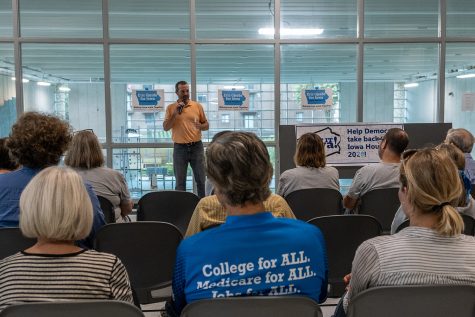
Eric Gjerde speaks to attendees during the Flip It Iowa! Fundraiser for Eric Gjerde at the Robert A. Lee Community Center in Iowa City on Sunday, September 8, 2019. Gjerde is running for the Iowa House of Representatives District 67.
Flip It Iowa went on to host 50 events across the state for 19 candidates, which altogether raised about $100,000 throughout the 2018 midterm elections, according to Flip It organizers.
“We could sit here in this blue bubble and be isolated, or we could go out and connect with people from other districts,” Hiatt said in a September interview.
The group looks at voter-registration data — targeting Republican-held districts with more registered Democrats than Republicans or ones with a large share of independent voters. They also look at margins of loss from previous House candidates and how statewide candidates performed in the districts, including districts such as Gjerde’s that voted for Hubbell and districts that flipped from Obama to Trump in 2016.
Many of those districts rest in areas surrounding Des Moines, Dubuque, Cedar Rapids, and Davenport. Seven of the 20 districts in which fundraising parties were hosted ended up flipping — most of which surrounded Des Moines. That means many districts Flip It Iowa aided will be targeted again in 2020.
In Iowa, a majority of votes for statewide Democratic candidates come from racking up high-percentage wins in urban counties such as Polk and Johnson. In 2018, Republican gubernatorial candidate Kim Reynolds carried 88 out of 99 counties, yet won the governorship by just 3 percentage points over Democrat Fred Hubbell, who won Iowa’s most populous counties: Johnson, Polk, Black Hawk, Scott, Linn, and Story. Democratic Rep. Cindy Axne ousted her Republican challenger in Iowa’s 16-county 3rd District representing southwest Iowa with winning a majority in just one county — Polk.
The last two elections — 2016 and 2018 — revealed a sharpening divide in Iowa between Republican and Democratic voters geographically — urban blue areas such as Iowa City got bluer and rural areas became redder, says University of Northern Iowa political-science Professor Christopher Larimer.
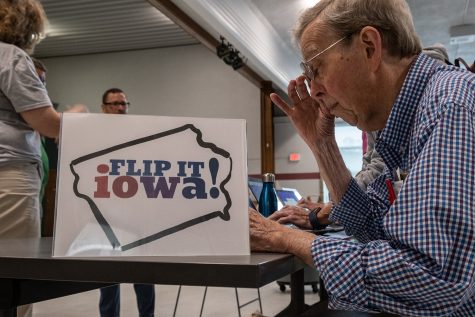
An attendee signs in during the Flip It Iowa! Fundraiser for Eric Gjerde at the Robert A. Lee Community Center in Iowa City on Sunday, September 8, 2019. Gjerde is running for the Iowa House of Representatives District 67.
“You see very few blue dots in the more rural areas or more rural districts, whether it’s an Iowa House district or an Iowa Senate district,” Larimer said, but he added that it would take more extensive research to figure out the underlying reason.
“What’s going to take, you know, 10-20 years to kind of work itself out is, is how does that fit with the demographic changes?” he explained. “Where are people moving from and where are they moving to and how does that fall along party lines?”
Larimer said it’s hard to predict, especially a year ahead of the 2020 general elections, which districts are going to be competitive since some don’t have a candidate running yet. He added that local legislative races are often much more personal than statewide races, as people tend to know their legislators.
Flip It Iowa modeled itself after the Sister District Project, a nationwide organization that targets key state legislative districts that could contribute to turning chambers over to Democrats. That group is a 527-tax exempt political organization and PAC. However, Flip It doesn’t share that classification, as attendees donate directly to campaigns.
As a percentage of campaign budgets, the money raised by Flip It events isn’t an overwhelming amount — Gjerde raised about $100,000 in total cash contributions throughout his campaign, according to records from the Iowa Ethics and Campaign Disclosure Board, about the same as Flip It-sponsored events raised in the entire 2018 cycle.
There are also more traditional political organizations that help Iowa House candidates within both parties — the House Truman fund on the Democratic side and the Eisenhower Fund to help Republican House candidates.
Party leaders will also transfer some of their own funds toward the state party’s war chest.
However, events organized by Flip It relieve candidates from the grunt work needed to organize an event. As local House candidates have little, if any, staff members, time is a valuable resource, said Konfrst, the representative from Windsor Heights, who flipped her district in 2018 and had two events hosted through Flip It — one in Des Moines and another in Iowa City.
“The day-to-day work of calling through invite lists and addressing envelopes and all of that stuff really falls to us as the candidate, and Flip It just said, ‘We will help you,’” Konfrst said.
Flip It Iowa doesn’t have a complete list of which districts they’ll target in 2020, but the group hosted a fundraiser for Gjerde, has one on the schedule for Ankeny Democrat Andrea Phillips running in House District 37, and planning for Mount Vernon Democrat Christian Andrews in House District 95.

uring the Flip It Iowa! Fundraiser for Eric Gjerde at the Robert A. Lee Community Center in Iowa City on Sunday, September 8, 2019. Gjerde is running for the Iowa House of Representatives District 67.
The closest thing to an incumbent
Gjerde, the second-time candidate from Cedar Rapids, is one candidate Flip It Iowa helped in 2018, whose race, Flip It organizers believe, could be an easier pick-up for Democrats than it was in 2018.
Gjerde, who teaches special education at Cedar Rapids Jefferson School District, lost in 2018 to incumbent Republican and former local TV journalist Ashley Hinson for the District 67 seat, composed of the area north of Cedar Rapids.
But, with Hinson running for Congress against first-term Democrat Abby Finkenauer, Gjerde is left without a Republican challenger for now, giving him a head start on campaigning, building on connections he made during his first run.
He narrowed the margin of loss compared to Hinson’s previous opponent — she defeated the previous Democratic challenger 62 to 37 percent in 2016. Gjerde lost 52 to her 48 percent in 2018.
In District 67, no-party voters make up the largest registered bloc of voters, at 8,742, according to Nov. 1 data from the Iowa Secretary of State’s website.
When looking at voter registration, Gjerde may have a slight advantage in the district compared to when he ran in 2018.
The number of Republican registered voters tops the Democratic bloc in the district, but the gap between the two groups has slimmed slightly since Gjerde last ran in 2018 — from a difference of 631 to 386 registered voters.
Gjerde, 40, and father of three, cites the rewrite of the collective-bargaining passed by the Iowa Legislature in 2017 that limited the capabilities of public employees, such as school teachers, to negotiate pay as the “straw that broke the camel’s back” to convince him to run for office.
Linn County GOP Chair Laura Kamienski said Republicans in the area were taking their time to find a good candidate to run against Gjerde, but that she was confident Republicans would keep control of the seat. She said that Republicans would connect with voters by talking about Republican-backed tax cuts and mental-health efforts that cleared the legislature.
She remembered how the Iowa Republican Party similarly targeted seats ahead of the 2016 election, when the Iowa Senate flipped red, and isn’t convinced the House will flip blue in 2020.
“I understand what their (Flip It Iowa’s and Democrats’) motivation is. They obviously want to take back the advantage of having the majority in the legislature — being able to set the priorities and the agenda,” she said.
In an email to The Daily Iowan Aaron Britt, the communications director with the Iowa Republican Party, said the party was confident it would protect and grow its House majority in 2020.
“They can’t win elections on the issues, so it’s no surprise Democrats have once again turned to a shady dark money group out of desperation,” Britt said in an email to the DI. A dark money group is determined as a political action group that doesn’t disclose their donors, but people who attend Flip It events donate directly to candidates’ campaigns, meaning their donations — which range from $25-$100 — are available in state records disclosures. “I can assure you that Republicans will have candidates in every corner of the state, so they’ll certainly have their work cut out for them. We are confident we will protect and grow our House majority in 2020.”
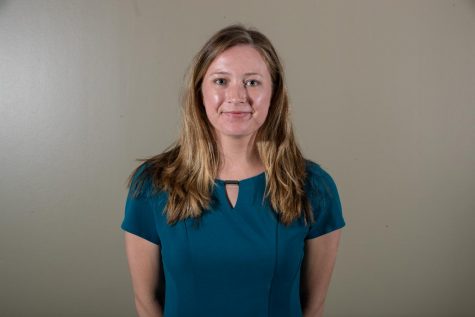
(she/her/hers)
Email: [email protected]
Twitter: @K_5mydearwatson
Sarah Watson is the executive editor at The Daily Iowan. She's in her...

Email: [email protected]
Wyatt Dlouhy is a photojournalist at The Daily Iowan. He is a fifth-year student both studying journalism,...

Email: [email protected]
Wyatt Dlouhy is a photojournalist at The Daily Iowan. He is a fifth-year student both studying journalism,...
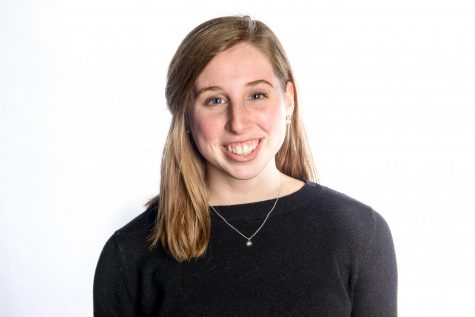
(she/her/hers)
Jenna Galligan is the Films Editor and Documentary Director at The Daily Iowan. She is a senior at the University of Iowa majoring in...
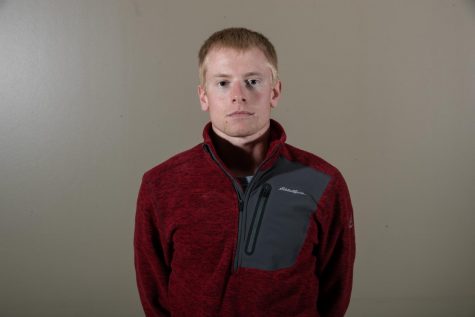
(he/him/his)
Email: [email protected]
Ryan Adams is the Films Assistant Visuals Editor at The Daily Iowan. He is a senior at the University of Iowa...
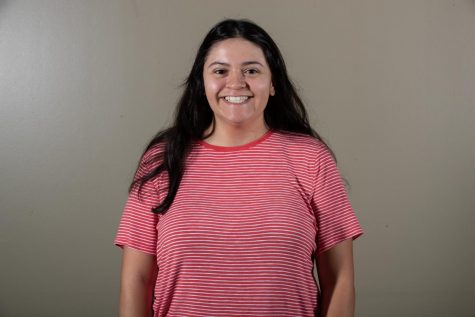
Email: [email protected]
Emily Wangen is a junior at the UI majoring in political science and minoring in economics. This is her third year at...
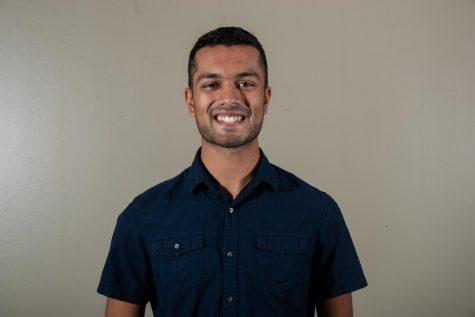
Email: [email protected]
Shivansh Ahuja is a Photojournalist at The Daily Iowan. He is a senior at the UI majoring in mechanical engineering,...
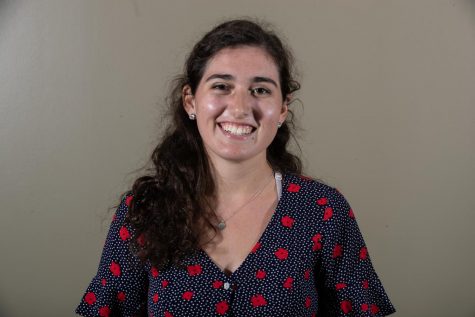
(she/her/hers)
Email: [email protected]
Katie Goodale is the Projects Assistant Visuals Editor at The Daily Iowan. She is a senior at the...
(she/her/hers)
Email: [email protected]
Raquele Decker is a Photographer and Videographer at The Daily Iowan. She is a junior at the University...
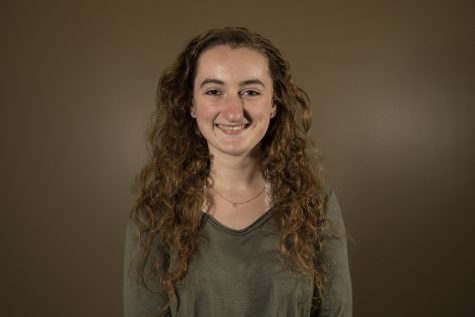
(she/her/hers)
Email: [email protected]
Hannah Kinson is the Photo Assistant Visuals Editor at The Daily Iowan. Hannah is a senior majoring in...



